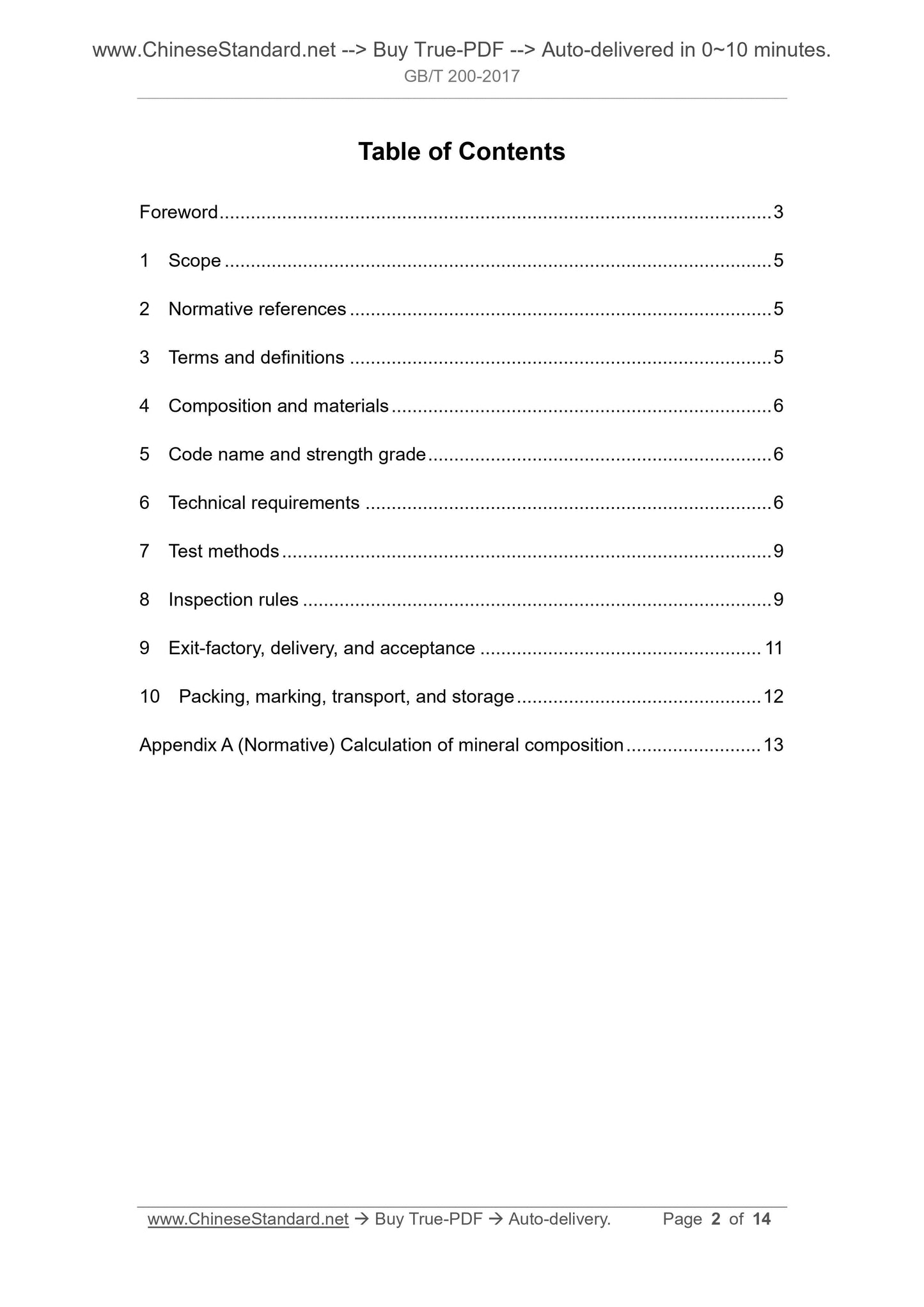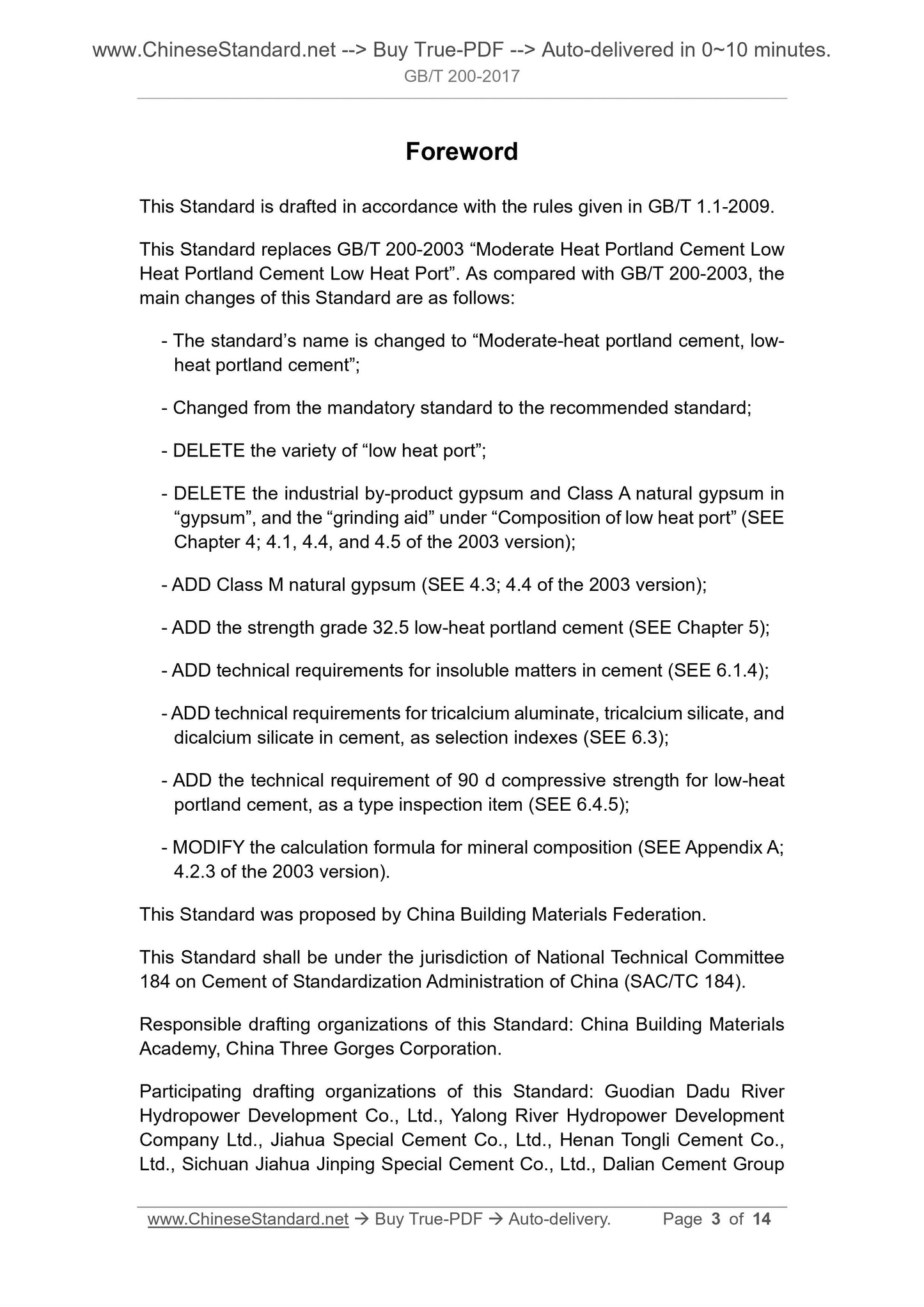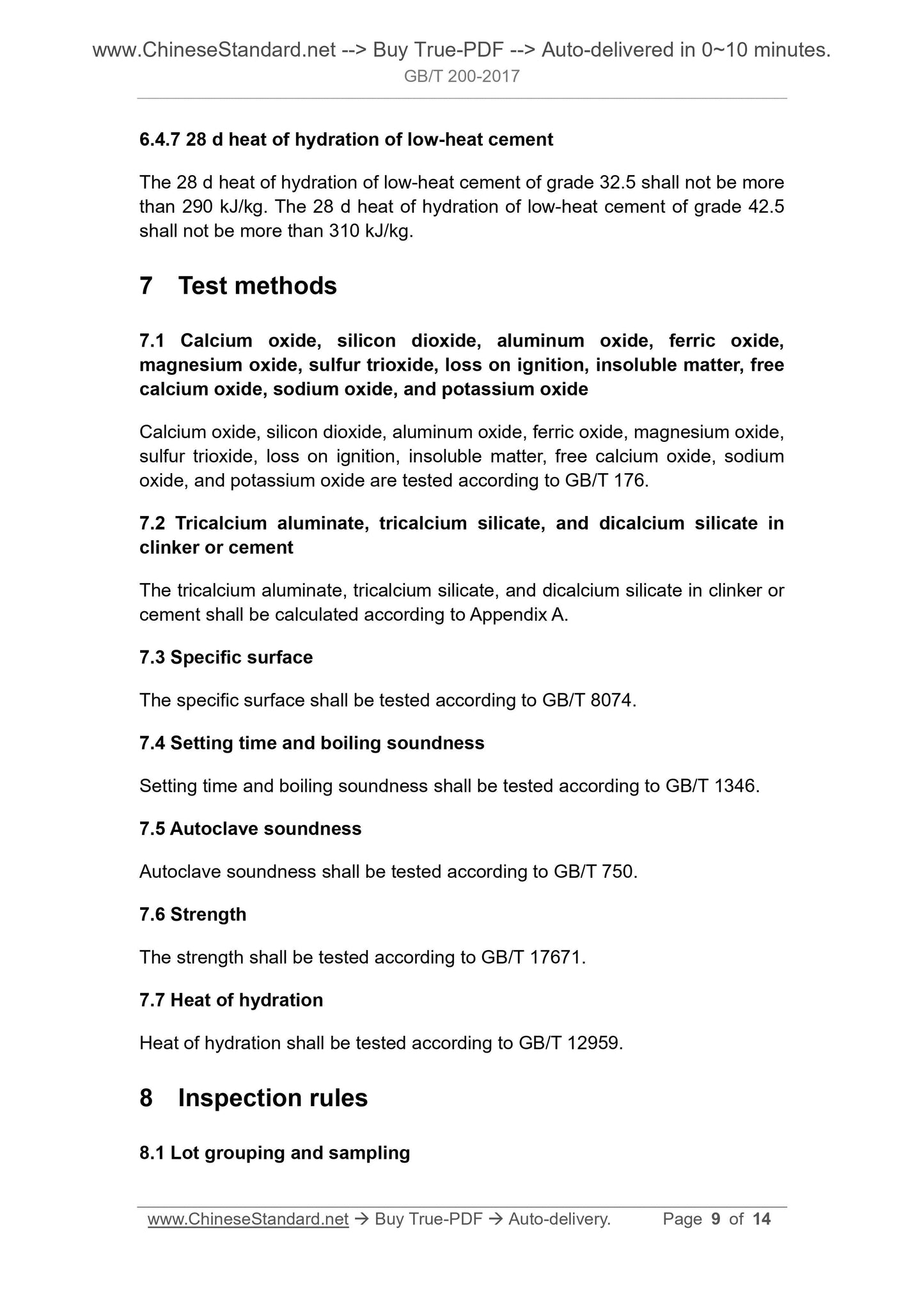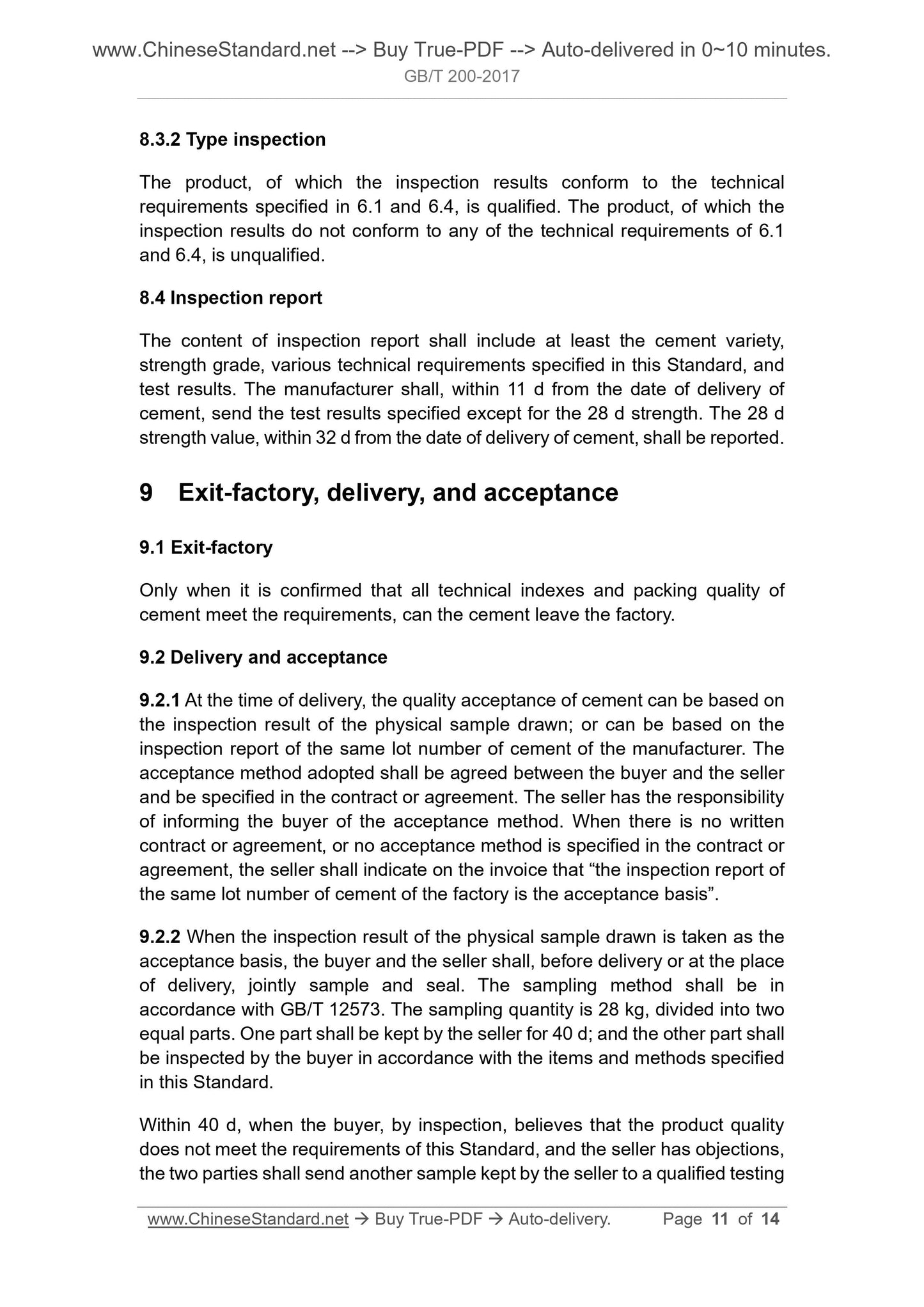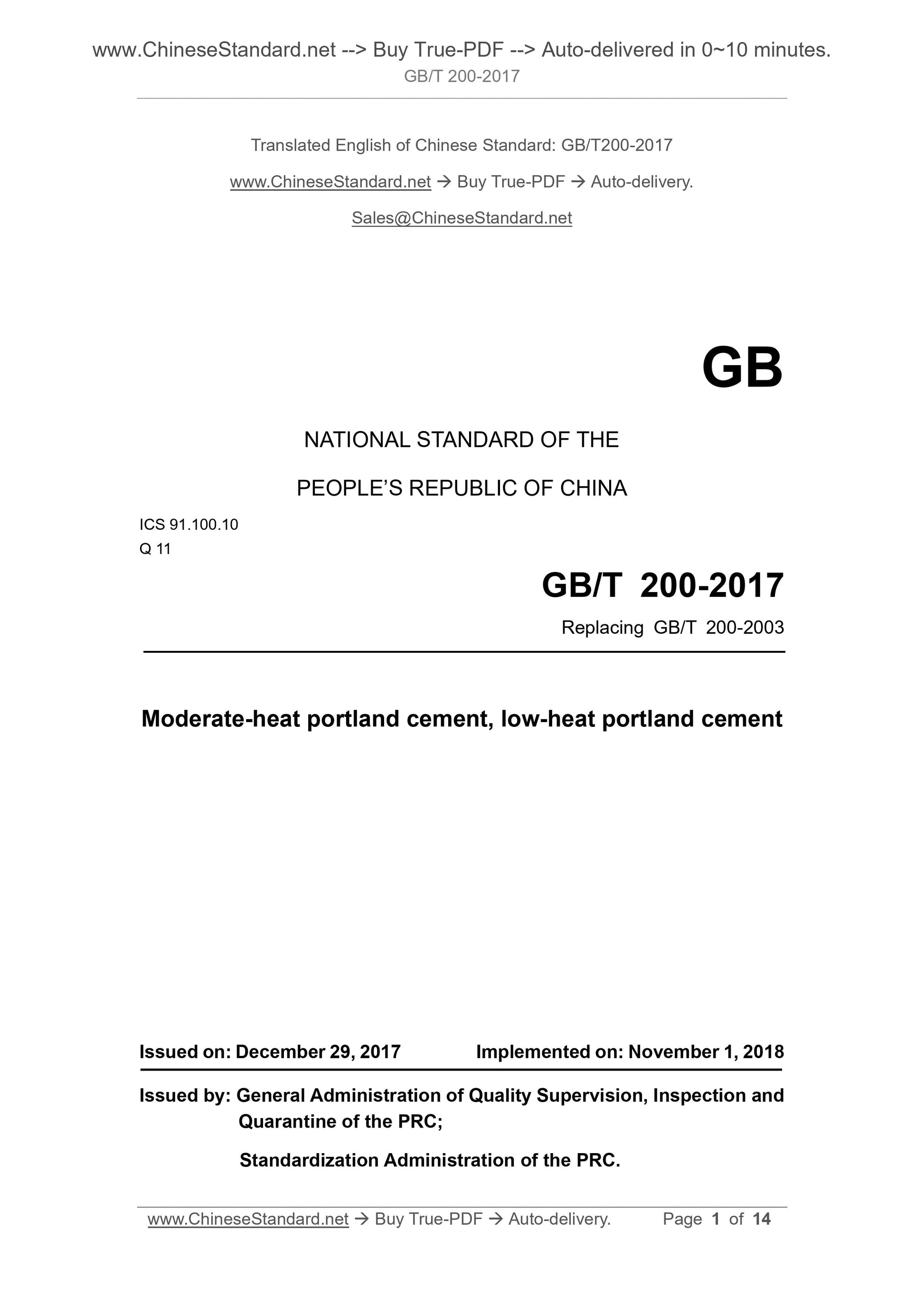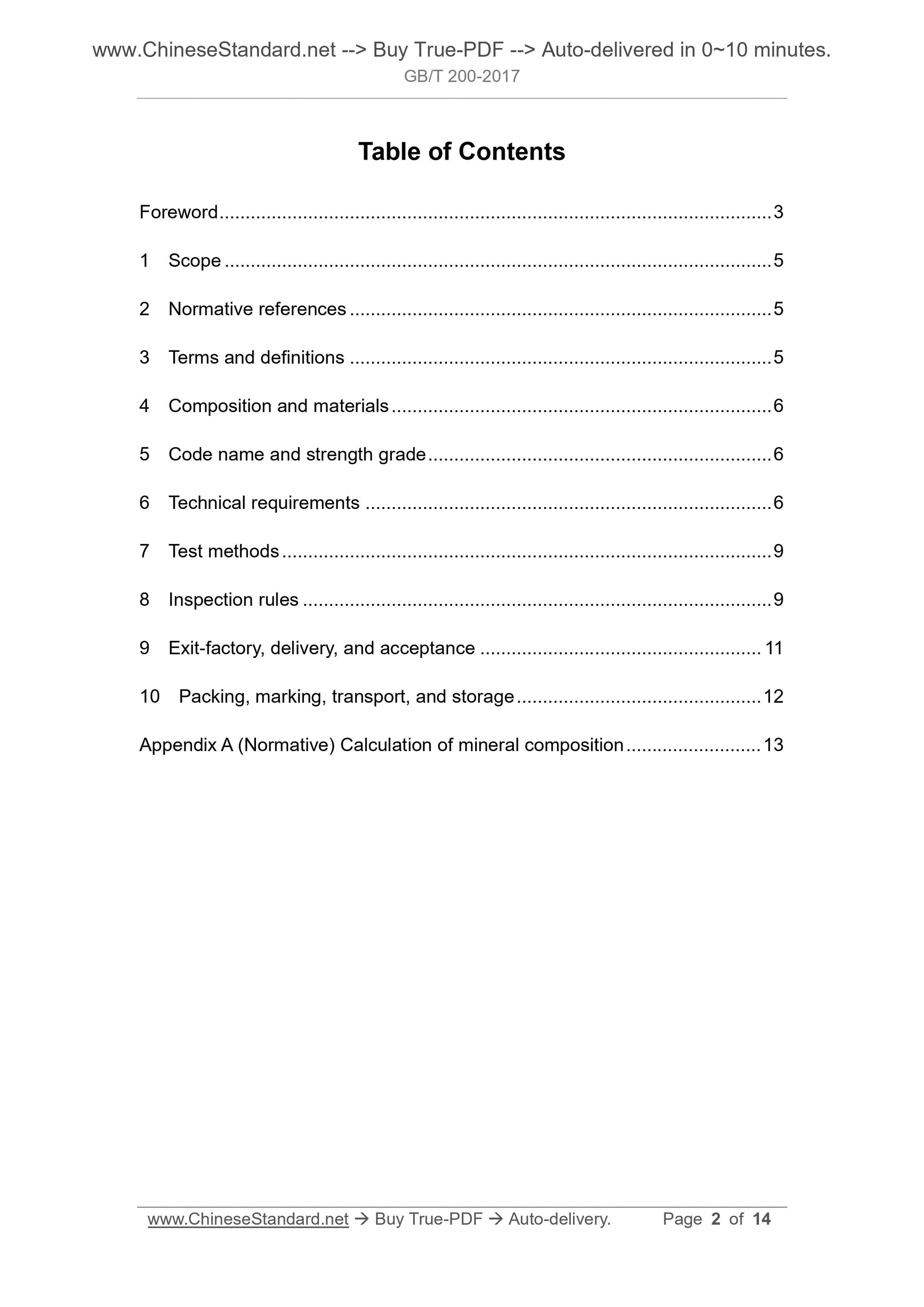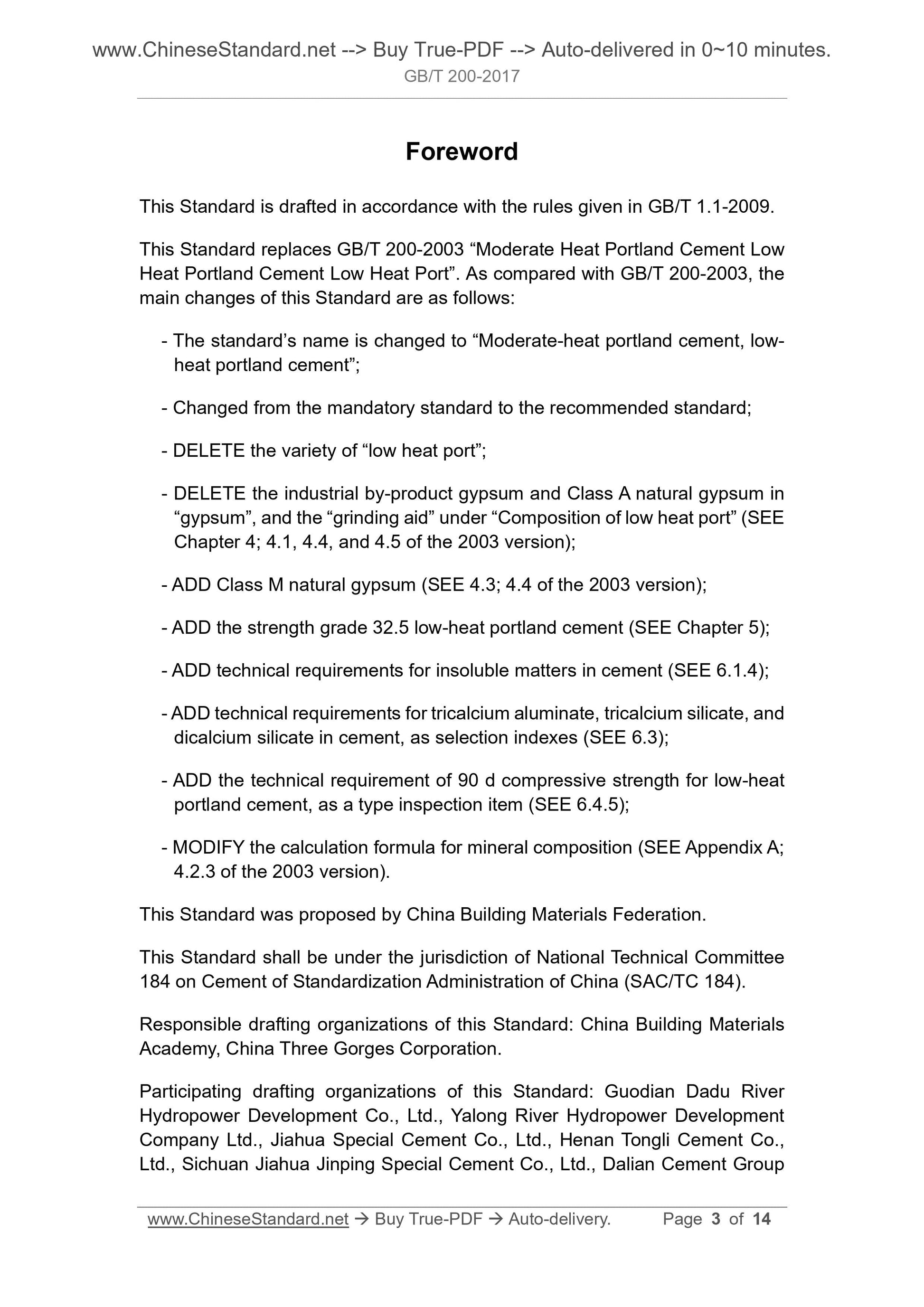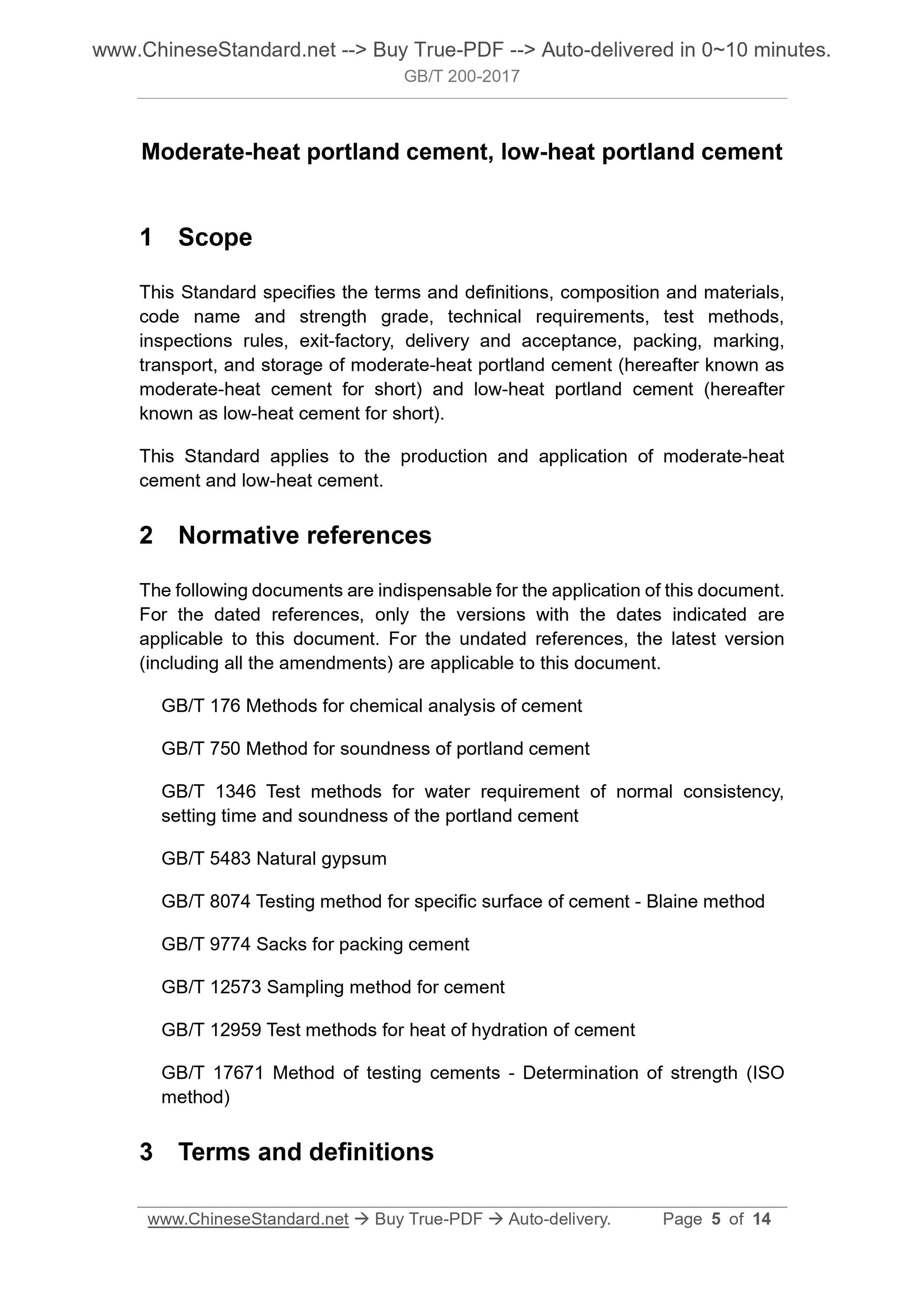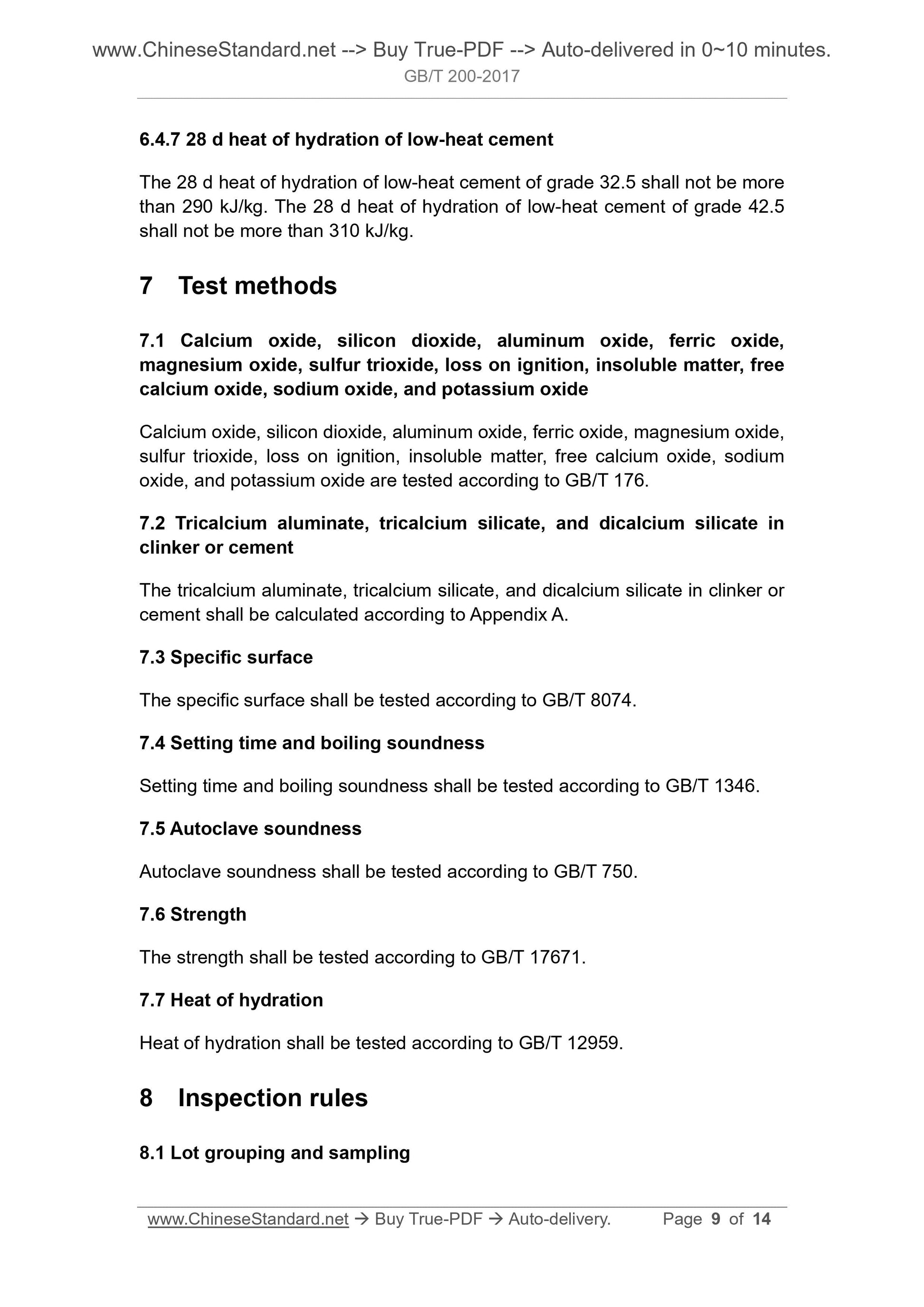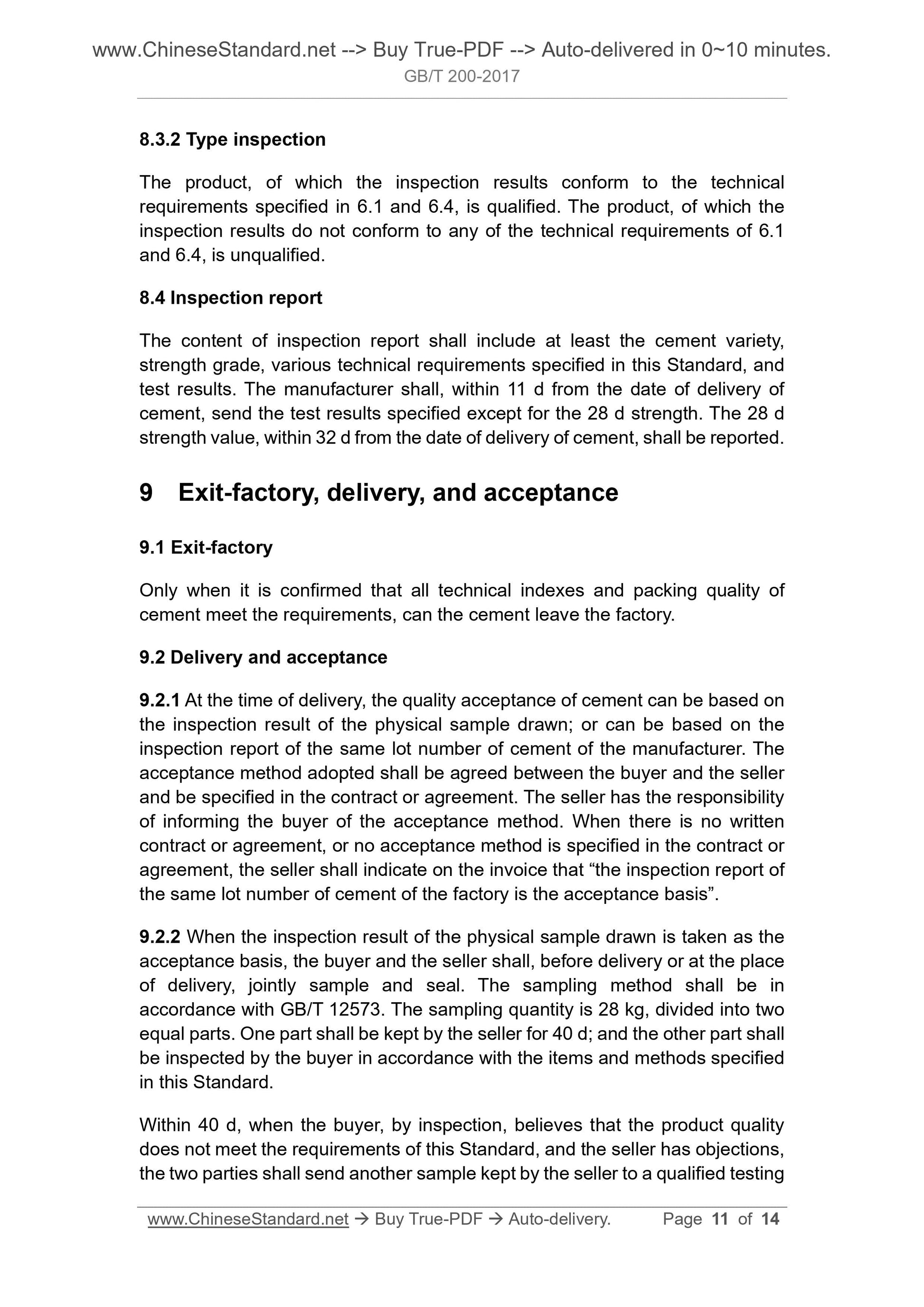1
/
of
6
www.ChineseStandard.us -- Field Test Asia Pte. Ltd.
GB/T 200-2017 English PDF (GB/T200-2017)
GB/T 200-2017 English PDF (GB/T200-2017)
Regular price
$135.00
Regular price
Sale price
$135.00
Unit price
/
per
Shipping calculated at checkout.
Couldn't load pickup availability
GB/T 200-2017: Moderate-heat Portland cement, low-heat Portland cement
Delivery: 9 seconds. Download (and Email) true-PDF + Invoice.Get Quotation: Click GB/T 200-2017 (Self-service in 1-minute)
Newer / historical versions: GB/T 200-2017
Preview True-PDF
Scope
This Standard specifies the terms and definitions, composition and materials,code name and strength grade, technical requirements, test methods,
inspections rules, exit-factory, delivery and acceptance, packing, marking,
transport, and storage of moderate-heat portland cement (hereafter known as
moderate-heat cement for short) and low-heat portland cement (hereafter
known as low-heat cement for short).
This Standard applies to the production and application of moderate-heat
cement and low-heat cement.
Basic Data
| Standard ID | GB/T 200-2017 (GB/T200-2017) |
| Description (Translated English) | Moderate-heat Portland cement, low-heat Portland cement |
| Sector / Industry | National Standard (Recommended) |
| Classification of Chinese Standard | Q11 |
| Classification of International Standard | 91.100.10 |
| Word Count Estimation | 10,172 |
| Date of Issue | 2017-12-29 |
| Date of Implementation | 2018-11-01 |
| Older Standard (superseded by this standard) | GB/T 200-2003 |
| Regulation (derived from) | National Standards Bulletin 2017 No. 32 |
| Issuing agency(ies) | General Administration of Quality Supervision, Inspection and Quarantine of the People's Republic of China, Standardization Administration of the People's Republic of China |
Share

